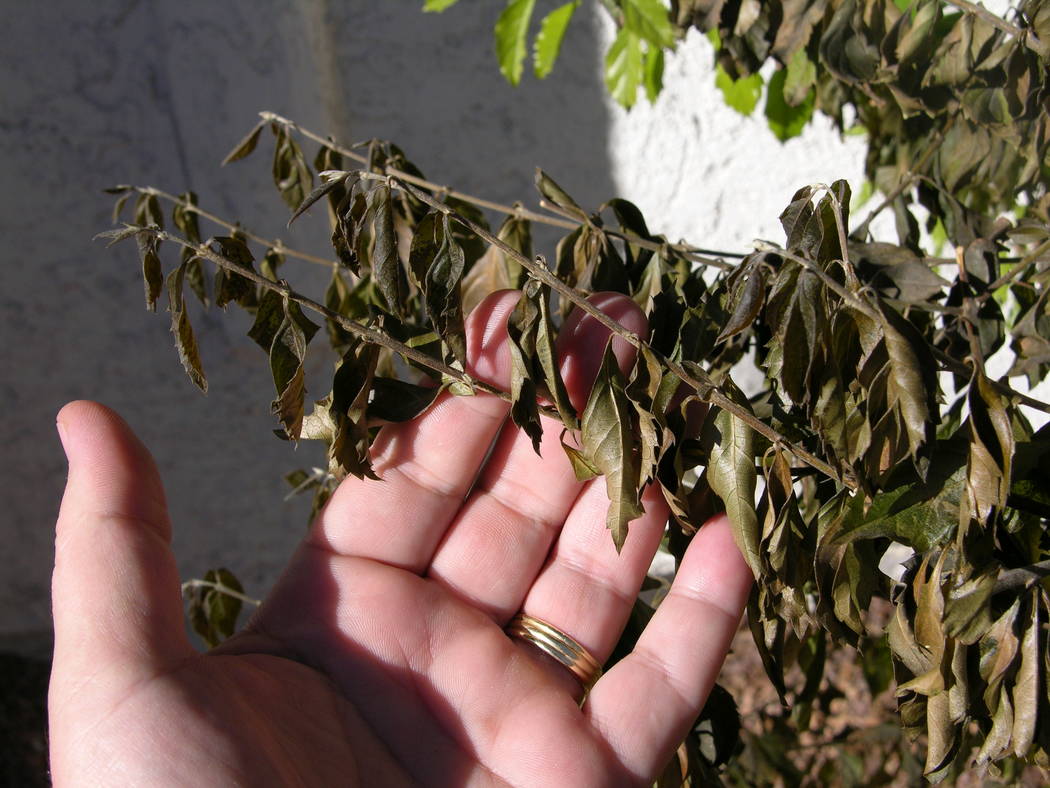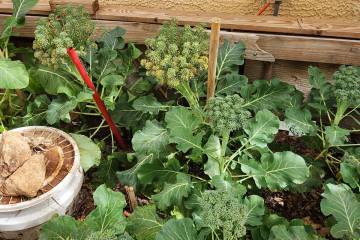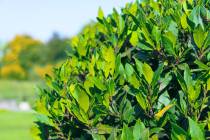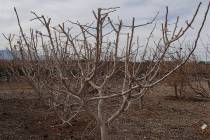Freezing temps more damaging to plants this time of year
Another freeze went through the valley this past week along with some unusually cold weather. Freezing temperatures are more damaging to plants as we enter the spring months because plants are starting to wake up from their winter dormant period. These same plants might have no problems with these temperatures in December and January.
During these low temperatures, honeybees were not flying during the day so pollination of flowers would be light. They fly when temperatures are warmer, the sun is shining and the wind is light. Put in some plants that flower during the winter and attract honeybees, and it will help bring the few that are out there scavenging into your yard. One example is rosemary, but there are many others.
In many places, this was a hard freeze. Some landscapes were colder than others and this may affect fruit production in trees that were flowering or had small fruit on them.
Electronic thermometers that record the previous days lowest temperature are not very expensive and may be worth having this time of year. By having one, you will know the temperatures your landscape experienced. The extent of damage to plants relates to the lowest temperature, how long it lasted and the susceptibility of the plant to freezing temperatures.
If you applied fertilizer to your landscape plants already or plan to soon, then all that the damaged plants need is water for recovery. If fruit is lost due to a hard freeze, there’s nothing you can do about it. If you plan to apply fertilizer soon, save some money and apply it when temperatures begin to warm.
Q: I have a mimosa tree that is about 15 to 20 years old with four main branches forming the trunk of the tree. These four branches form a well about 8 inches deep that catches rainwater and remains wet for about a week or so after a rain. Someone recommended filling this well with roofing tar so that the tree doesn’t rot at the point where the main branches come together.
A: Mimosa, or silk tree, is not a long-lived tree due to disease problems. At 15 to 20 years of age, it’s getting close to the end of its life. Its short life is usually a result of mimosa wilt disease that invades some of the limbs and causes limb or stem dieback. The tree usually dies in a matter of months once it gets the disease.
The reason I’m mentioning this is that you should realize this tree may die regardless of what you do, so prepare yourself for that eventuality. It may die because of nothing you did or didn’t do. You don’t see a lot of old silk trees around for a good reason.
I think filling that well with roofing tar is a bad idea and will damage the tree. Rainfall is so infrequent in our desert climate that I don’t think it’s worth the effort or concern. If this catchment is filling with water because of frequent irrigations by sprinklers, then this situation is different.
Secondly, any compound made from petroleum is potentially damaging to plants. Petroleum products are normally not applied to plants because of their toxicity. You run the risk of damaging parts of the trunk in contact with the roofing tar.
In my opinion, if that tree has survived this long, then leave it alone.
Q: I had new landscaping installed last June and had to guess the proper watering schedule for my plants. I really don’t know what I’m doing or why I’m doing it so I’m asking you to please suggest a proper watering schedule for my landscape during the four seasons of the year.
A: I suggest you follow the irrigation schedule sent by your local water purveyor. How the irrigation system was installed is anybody’s guess. Most landscapes have a mishmash of plants with varying root depths and watering needs so it’s difficult to give a blanket recommendation that fits everyone’s situation.
You are already ahead of many people because you recognize your irrigation schedule should be adjusted seasonally. This adjustment to your watering schedule is primarily the number of days per week that you water.
Once the number of minutes is established, or the amount of water plants receive, it doesn’t vary seasonally. The amount of water plants receive is adjusted by increasing or decreasing the number of drip emitters delivering water to each plant.
There are four seasons in our desert but for someone who uses snow to recognize that it’s winter, they will be lost here. People might argue this point, but the four seasons start approximately in February with spring, May for summer, October for fall and December for winter. These months are the approximate times when irrigation controllers are adjusted to more or fewer irrigation frequencies each week.
If you want more precision about how much water to apply, grab a 3-foot piece of skinny rebar. If you push this rebar into the soil after an irrigation, it will slide into wet soil easily.
Push it deeper until it’s hard to push any more. It’s difficult to push when it reaches dry soil. This is the depth of the irrigation water.
Repeat this in three spots around the plant to get an average wet soil depth reading. If you hit rocks when you do this, keep poking the soil in different places until you find a place where you can push it in and get a measurement.
Small plants, approximately a foot tall, should be watered a foot deep. Medium-sized plants, up to about 8 feet tall should be watered 18 inches deep. Water small trees and large shrubs 24 inches deep.
Large trees require deeper irrigations so water them about 3 feet deep. Adjust the amount of water these trees get individually by adding or subtracting emitters.
Q: I only have a small container for composting so I mix it twice a week on the ground and put it back in the container. It’s about two months old, and I’m wondering if I can use this compost now for my plants?
A: What you’re doing sounds like a lot of work. To judge if the compost is finished or not, look at its color, consistency and smell. It should be rotten through and through, all the same color and have a good smell. Composting is controlled rotting of the ingredients.
I like to divide composting into two categories: hot composting and cold composting. Hot composting relies on developing high temperatures to sterilize the contents from human pathogens while cold composting doesn’t. They both rot the ingredients but hot composting is much faster than cold composting.
Your compost size is small so it will probably never become hot compost. Whenever handling any compost, always wear gloves and wash your hands afterward.
Your composting will be slow. You can speed it up by making the ingredients of your compost as small as possible.
Compost is best used when it is mixed with the soil at the time of planting. Compost added to the top of the soil will improve the soil on the surface but not much below the surface.
Because this surface soil is improved, roots will grow toward the surface in or near this composted area. Yes, you can apply it but I would cover the compost with a layer of woodchips if you can’t mix it into the soil.
Bob Morris is a horticulture expert and professor emeritus of the University of Nevada, Las Vegas. Visit his blog at xtremehorticulture.blogspot.com. Send questions to Extremehort@aol.com.





























